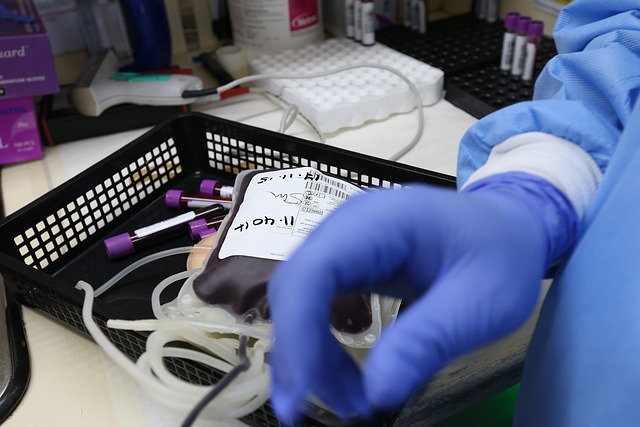Donate plasma for money
Donating plasma as a side hustle might be the easy and rewarding path you are looking for. It’s true that this fluid, which flows in your blood, carries vital elements like antibodies and proteins. These can play a crucial role in crafting medicines that save lives.
You might find joy in the thought of making some money while aiding in medical research. But, hold on a moment. It is essential to ensure this road is indeed the right one for you, paying heed to your well-being.
Now, if you feel drawn towards this, it is time to fully understand the path of becoming a plasma donor that gets paid. It is a journey where wellness meets financial gains. Do step in with total knowledge and preparedness.
What are the requirements to donate plasma?
Wondering if you can be a plasma donor? It’s not a process where anyone can just step in and donate. The procedure is firm and has several stages. You must first clear a detailed medical history check and succeed in a health exam. Being in perfect health is not a strict need but there are aspects that can stop you from qualifying.
To be a person who donates plasma, you must meet the following conditions:
- Be 18 years or older
- Weigh not less than 110 pounds
- Clear a medical screening before the donation
- Have no serious health issues based on tests
On the other side, there are people who cannot take part in this. They are:
- Individuals with unsafe blood pressure and iron levels
- Individuals found to have viruses such as hepatitis and HIV
- Individuals with unwanted levels of protein and hemoglobin
In some cases, even a recent tattoo or piercing can be a barrier to donating plasma. So, it is important to know all the rules before you decide to donate.
How often can I donate plasma?
It is possible to do it more often than giving away your entire blood. This is because, during plasma donation, you get a portion of your blood returned to you after it separates from elements like red blood cells. This detail comes from Amy Efantis, a leader at the Plasma Protein Therapeutics Association, an entity involved with firms that use blood plasma to create medicines.
As per the guidelines of the American Red Cross, a gap of 28 days between each session is advised, which makes it a total of 13 times in a year. However, many private groups adhere to the standards set by the U.S. Food & Drug Administration. This body permits donations every two days, allowing up to two donations within a span of a week, provided there is a break of 24 hours at least between two donations. It is a way to balance health safety and the high demand for plasma.
How long does it take to donate plasma?
Your initial visit to a clinic is a bit time-consuming, lasting up to two hours. During this, a clinic worker will gather details about your health through questions, measure vital signs including your weight, and carry out a quick blood test using a finger prick method. After this step, you move to the donation part where you have the freedom to indulge in activities like reading or watching TV or simply take a break.
Following your first session, the subsequent visits are generally shorter, roughly around an hour. However, this is not a fixed period; it changes depending on different clinics. So, even though it is a generous act, it does require a chunk of time from your schedule, especially in the beginning.
Why you shouldn’t donate plasma. Donation risks
Donating plasma does carry a share of disputes, with concerns raised over the years about the exploitation of low-income groups in America. Critics argue that the compensation given to the donors stands no match to the real value of their plasma in the booming pharma market globally.
As you sit for plasma donation, the experience is largely akin to a normal blood donation. Apart from a brief sting as the needle goes in, the procedure is mostly painless. To make sure it goes smoothly, hydrate yourself well before you go and be transparent about your recent health history and any medicines you are on. This openness helps in averting medical hitches later.
However, be prepared for some after-effects once you are done. You might feel drained, notice some bruises, experience bleeding or find yourself feeling dizzy. Over time, if you continue to donate regularly, there could be a drop in your immunoglobulin levels and a risk of becoming anemic due to reduced red blood cells. It paints a picture of a process with both noble outcomes and personal health impacts to weigh.
How much do I get paid to donate plasma?
While you won’t see any monetary rewards when you give blood through avenues like the Red Cross – due to concerns over the purity of the blood supply – the scene shifts when it comes to plasma donations. Since plasma primarily aids in creating medicinal items and not for direct transfusions, donors find themselves getting paid.
The cash you pocket varies based on how much you weigh and where you are donating. A heavier donor means more plasma, which translates to a lengthier session and a higher payment, usually swinging between $50 and $75 for each visit.
Stepping in as a new donor can be quite fruitful. For instance, CSL Plasma, a giant in the plasma collection field boasting over 270 centers, offers newcomers the chance to accumulate up to $1,100 in their initial month of donating.
After your session wraps up, you will find your earnings on a rechargeable debit card. You are free to use this card at once, making it a swift way to enjoy the financial perks of your donation, a feature common in plasma donation hubs. It is a route where helping others comes with a tangible benefit for you too.
Where can I donate plasma?
The consistent demand for plasma assures that centers are accessible in numerous spots nationwide, making it likely that you will find one near your location. This opens up a convenient avenue for aspiring donors.
To pinpoint a center in your vicinity, a simple search with your zip code on the official sites of many firms will do the job. Another reliable stop is DonatingPlasma.org, a platform that lists centers affiliated with Plasma Protein Therapeutics Association, a major player in the U.S. plasma therapy market. Centers boasting the International Quality Plasma Program stamp are also listed there, showcasing facilities that uphold stringent standards and foster donor education.
Before you set out, give a ring to the nearest center to understand the prerequisites and to have the necessary paperwork ready. Preparing in advance can pave a smoother path to becoming a plasma donor, bringing you a step closer to contributing to a vital cause while earning from it.
Frequently Asked Questions (FAQ)
Is it safe to donate plasma?
For the majority, giving plasma goes off without a hitch, yet a few might face tiredness, bruises, minor bleeding, or a loss of fluids. Feeling a bit unsteady or having light-headed moments are other mild issues you might encounter. Though not common, there are instances of donors passing out. On the rare occasion, severe reactions or infections might crop up, which can be treated.
Does it hurt to donate plasma?
Giving plasma is generally not painful. The experience largely mirrors a standard blood donation. While you could notice a sharp pinch as the needle goes in, what follows aims to be a comfortable period as the team ensures your ease during the whole time you are donating. It represents a scenario where minor discomfort opens the door to a pain-free and potentially rewarding process.
Can you donate plasma if you smoke weed?
Yes, weed smokers can donate plasma. The key rule is to stay sober at the time of donation, steering clear of cannabis for at least a day before you plan to donate. It portrays a sense of responsibility ensuring safety and quality in plasma donations.
Can you donate plasma if you have tattoos?
In the US, recent tattoo recipients, those inked in the past 3-6 months, might find themselves unable to donate plasma. The reason behind this is the heightened risk of spreading infectious diseases via blood exchange that comes with getting a tattoo. It underlines a cautious approach to ensure safety in the plasma donation process.
Can diabetics donate plasma?
Diabetics managing well with insulin or oral drugs have the green light to donate. The guidelines suggest a gap of at least 8 weeks for standard donations and a minimum 7-day interval for platelet contributions. Meanwhile, automated donations require a more extended break of 16 weeks. It sets a clear yet considerate timeline, facilitating frequent yet safe donations from well-managed diabetic individuals.
Sources: hhs.gov, webMD.com, redcrossblood.org
Read more

